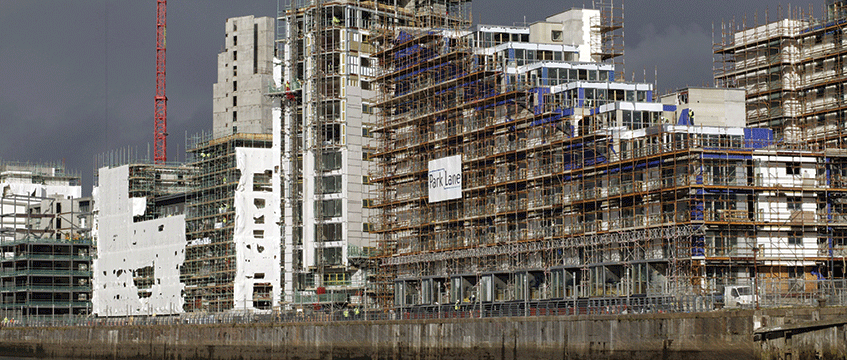As the housing shortage added to the severity of the cost-of-living crisis, the Scottish rent cap and eviction freeze seemed understandable measures to support individuals. While the plans have given rise to considerable scepticism throughout Scotland’s private rented sector, the uncertainty created by further possible change is causing issues.
In the budding build-to-rent space, in particular, where investors typically forward fund the initial construction of multi-flat developments, budgets and forecasts already under pressure from spiralling build costs were rocked by the sudden impact of these measures on their forecast income. Hundreds of flats about to start on their way to market were stopped in their tracks (and that is just those that we were involved in – the numbers are no doubt far higher).
Investors
But developers and investors are excellent at planning ahead and testing whether they can make a project profitable, even with rental caps. Setting aside the initial shock factor, sophisticated investors that are active or interested in the Scottish market can assimilate rent control measures into their forecasting and make their developments not only viable, but successful for all involved (including the ultimate residential occupiers).
When a standardised form of residential tenancy was introduced in Scotland in 2017, initial concern about a perceived weakening of landlord controls very quickly gave way to the pragmatic embrace of the new rules and the feared impact on returns and occupancy were not realised.
Scotland, Edinburgh and Glasgow, in particular, are still attractive to BTR investors that represent an important part of the solution to the housing supply crisis. But while some projects continue, we are hearing anecdotally that there is a feeling the dust is not being allowed to settle on rent control measures before conversation about further action kicks it up once more.
This means we have a constantly shifting horizon that makes it difficult to assess the medium-term impact of current plans or the routes to accommodating them. This uncertainty can turn longer-term investment planning into an unfeasible guessing game.
With a critical need for housing, and the current global economic climate as it is, competition for investment is heightened. Scotland is competing on an international stage for those investment funds. To be viewed as an attractive destination for investors requires fair, carefully considered, long-term, legislative conviction.
In this context, consistency is just as important as the detail.
Business
However, it is not just property investment where fluctuating confidence is felt strongly. Housing supply is heavily wrapped up in the skills shortages that have hit the UK. With the UK sitting outside the EU, construction skills shortages are adding costs to the budgets of Scottish businesses. This is not just a result of higher wages for current employees in a smaller talent pool, but also for using the visa system to recruit from overseas.
We recently obtained data from the Home Office through a freedom of information request which showed that applications for Scotland and Northern Ireland’s skilled worker visas continued to rise significantly – increasing by 91% from Q4 2021 to Q4 2022. The time and costs involved in the visa system mean employers do not choose this route on a whim, but out of necessity.
However, it is also argued in some quarters that the unfavourable income tax landscape in Scotland (compared with the rest of the UK) may already be having a compounding adverse impact on retention and attraction of key talent.
Is this likely to be a push factor for future generations of graduates? It is vital that Scotland does all it can to increase access to talent for business. Good housing is key to achieving this. Scotland needs a greater supply of suitable, high-quality, affordable accommodation in order to retain and attract the diverse workforce the country needs.
A balance to be struck
Housing strategy has the power to influence a range of issues facing our country. Not least the attraction of investment in new PRS supply from within the UK or abroad, but also a skilled workforce. It is so important to get this very difficult rent control balance right. Rental caps may be a necessity, especially in the current climate. However, a one-size-fits-all approach has not worked.
Announcements regarding possible future measures or restrictions cause more jitters in the market. Because of the uncertainty, it is often the case that the possibility of change can be more detrimental than actual, concrete legislation. What Scotland needs is the laying down of a well-thought-out, multi-faceted rent control policy which takes account of the current supply mix as well as the required supply pipeline.
The whole of the UK is facing a housing crisis and Scotland should be credited for trying to influence affordability in the rental sector. It has been a bold strategy and the effects are still unfolding. What is clear, however, is that by doing so the Scottish government is risking the development of new stock and potentially worsening affordability in the future.
Despite those headwinds, there is a cross-section of investors and developers forging ahead. Rettie & Co recently estimated that the BTR sector in Scotland is valued at £4.5bn, but less than £1bn is currently operational.
From what we are seeing and hearing, the rental cap measures have not, in themselves, posed the only or greatest challenge to investors. It has been a combination of frequent change, less-than-clear policy announcements, and uncertainty around how many more times the curbs might be extended, varied or new actions introduced.
Our clients tell us it is this uncertainty that creates the biggest threat to investment, and exacerbates the chokehold on the supply of new stock. And that might have unintended and far-reaching consequences for the country’s future prosperity.
Steven Dick is a partner at Eversheds Sutherland








